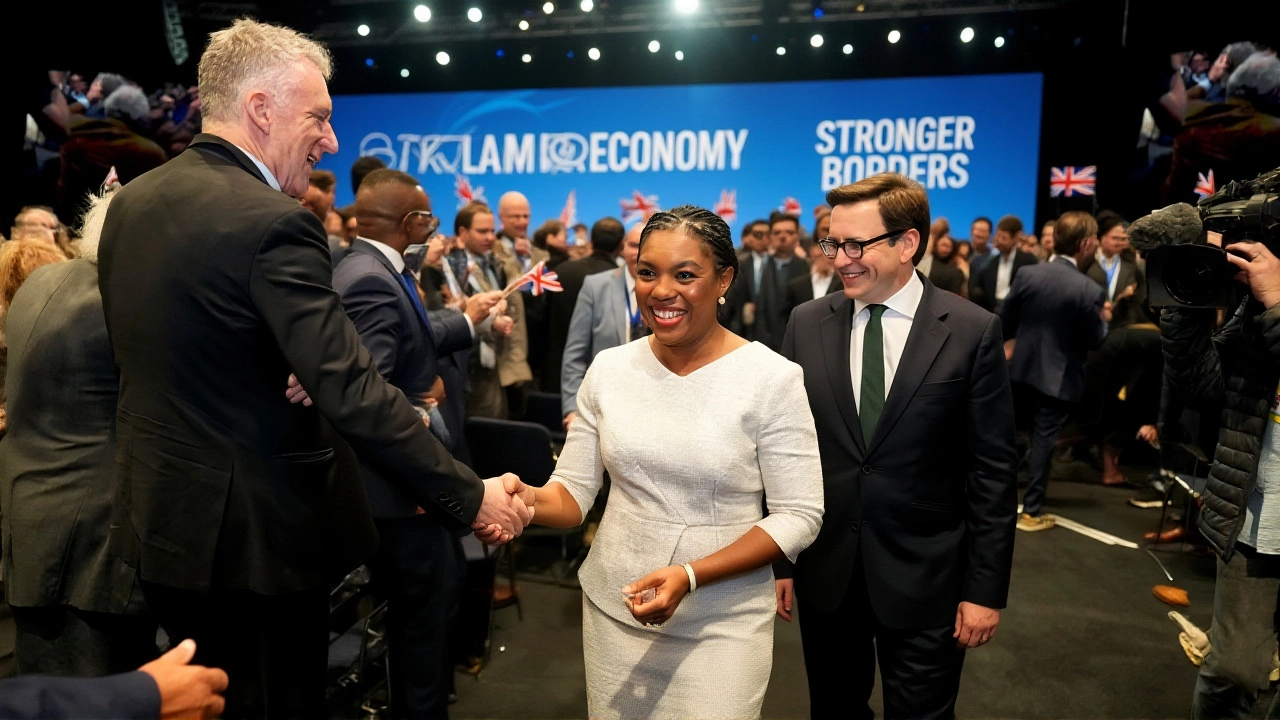When Kemi Badenoch, Leader of the Conservative Party took the stage at the Conservative Party ConferenceBirmingham on October 8, she dropped a bombshell that could reshape the UK housing market: the party will abolish Stamp Duty Land Tax if it wins the next general election. The pledge, delivered in a 45‑minute keynote at the International Convention Centre, was framed as a fix for a “punitive tax burden” that, according to the leader, “strangles property‑market mobility”.
Background on SDLT and Conservative Policy
Stamp Duty Land Tax (SDLT) first appeared in the Finance Act 2003, taking over from the centuries‑old Stamp Duty. Administered by HM Revenue & Customs, the tax applies to residential purchases in England and Northern Ireland above £125,000, with rates that climb from 2 % to 12 % for properties over £1.5 million. In the 2024‑25 fiscal year the levy pulled in roughly £14.2 billion, according to HM Treasury, and was paid by about 1.04 million homebuyers – roughly 87 % of all transactions.
Since the Conservatives took power in 2010, they have tweaked the thresholds eleven times, most notably lifting the nil‑rate band to £250,000 in the September 2022 mini‑budget – a move that lingered until March 2025. The party’s stance has traditionally been to use SDLT as a lever for revenue and market‑stabilising measures, not to wipe it out altogether.
Badenoch’s Announcement at the Birmingham Conference
During her speech, the leader said the tax was “a barrier to social mobility for first‑time buyers”. She promised a future Conservative government would eliminate the charge *across all price brackets*, not just raise the zero‑rate threshold. The promise was captured on a YouTube video (ID: xq_fa3J2wKw) that aired at 20:15 UTC, where she added, “If we’re serious about getting more people onto the ladder, we need to stop taxing them for trying.”
The timing, observers noted, was strategic – the pledge came exactly 18 months before the constitutional deadline for the next election on January 28 2027. The Institute for Government, a non‑partisan think‑tank, confirmed the statement in an explainer posted at 20:30 UTC, noting that Treasury officials would have to draft a costed proposal by the first quarter of 2026 if the party wins.
Reactions from the Housing Sector
Not everyone cheered. Council of Mortgage Lenders released a statement at 21:17 UTC through its chief executive, Paul Smee, who said, “While abolition would reduce transaction costs, the revenue loss requires credible fiscal replacement mechanisms.” The body warned that a sudden drop in £14 billion of annual income could pressure public services unless the government identifies offsetting taxes or spending cuts.
Industry analysts at The Negotiator echoed the sentiment, calling the pledge a “sharp policy reversal”. Their piece highlighted that in 2024, 1,042,300 homebuyers handed over SDLT, meaning any removal would instantly affect over a million households.

Fiscal Implications and Expert Analysis
Economists are already running the numbers. If the tax vanished tomorrow, the Office for Budget Responsibility would likely flag a shortfall of £13‑15 billion in the 2025‑26 budget, roughly 0.6 % of GDP. Some forecast a modest boost to house‑price growth – perhaps 2‑3 % in the first year – as buyers rush to take advantage of cheaper purchases. Others warn of a “price‑inflation feedback loop” where reduced transaction costs simply push prices higher, diluting the intended benefit.
Professor Eleanor Sanderson of the London School of Economics, who specializes in housing policy, told us, “Abolishing SDLT could inject liquidity into the market, but without a clear revenue replacement it risks creating fiscal pressure that might be felt on public services, especially in the most vulnerable regions.” She added that a phased approach, such as lowering rates gradually, might balance market stimulus with budget stability.
Political Ramifications and the Road Ahead
The announcement has already reshaped the election narrative. Labour leader Keir Starmer is set to address the issue at the Labour Party Annual Conference in Liverpool on October 20, where he is expected to defend the current SDLT system as a vital source of public revenue. Meanwhile, senior Conservative figures, including conference chairman Robert Jenrick, have hinted the pledge could be a decisive swing‑voter tactic, targeting first‑time buyers in marginal seats.
Regardless of the political back‑and‑forth, the next few months will see Treasury officials crunching numbers, opposition MPs filing questions, and the public watching the debate over whether a tax‑free property market is a realistic dream or an electoral promise that could strain the public purse.

What Comes Next?
- Q1 2026 – Conservative Treasury drafts a costed proposal if the party retains power after the 2027 election.
- November 2025 – The OBR releases its fiscal sustainability report, modelling the revenue impact of SDLT abolition.
- October 20 2025 – Keir Starmer delivers his Labour response at the Liverpool conference.
- January 28 2027 – General election decides whether the pledge becomes reality.
For now, homebuyers, lenders and policymakers alike are left to wonder: will the promise of a stamp‑duty‑free future materialise, or will the numbers prove too steep a price to pay?
Frequently Asked Questions
How would abolishing SDLT affect first‑time homebuyers?
Removing the tax would lower the upfront cost of purchasing a home, potentially saving a first‑timer up to £6,000 on a £300,000 property. This could make buying more affordable, but if house prices rise in response, the net benefit might shrink.
What revenue would the government lose without SDLT?
In the 2024‑25 tax year SDLT generated about £14.2 billion. Analysts estimate a full abolition would cut the budget by roughly £13‑15 billion annually, equivalent to 0.6 % of GDP, unless other taxes are raised or spending is trimmed.
Can the housing market sustain a sudden tax cut?
Short‑term activity could surge as buyers rush to lock in cheaper deals, but long‑term stability depends on broader economic factors. Some economists warn a rapid price rise could offset the savings, especially in high‑demand regions like London and the South East.
What alternatives could replace SDLT revenue?
Potential replacements include a modest increase in income tax bands, a new land‑value tax, or targeted spending cuts. The Treasury has signalled it will explore “credible fiscal replacement mechanisms”, but no specific plan has been published yet.
Will Labour likely keep SDLT if they win the election?
Labour has not signalled any intention to abolish the tax. Their focus appears to be on protecting revenue for public services, meaning SDLT would probably remain in place under a Labour government.

